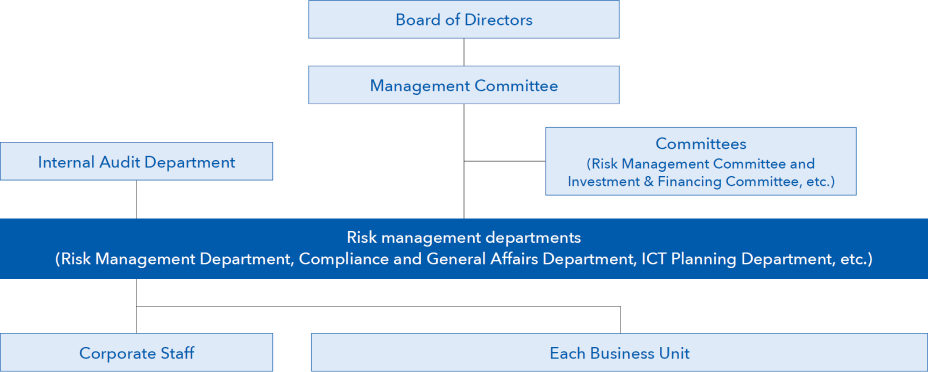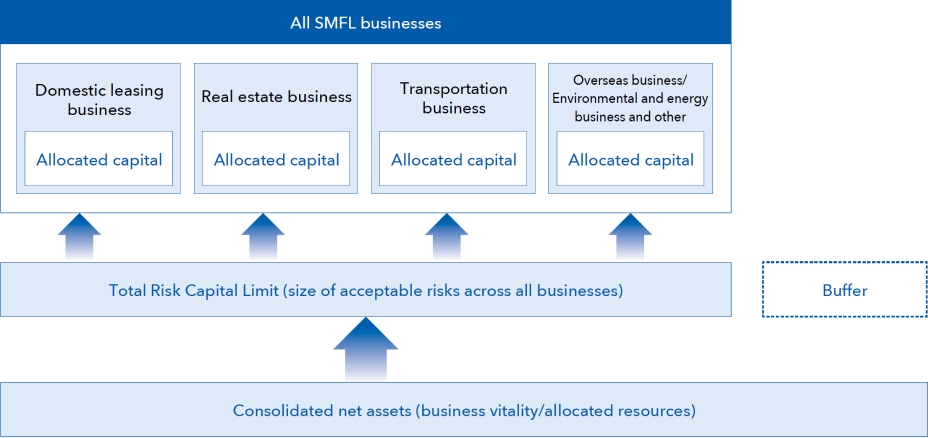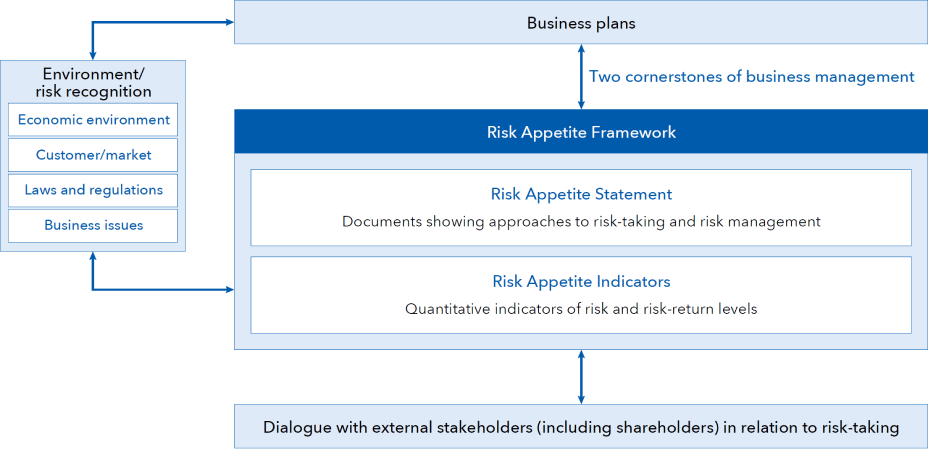Risk Management
General Principles for Risk Management
SMFL recognizes the importance of risk management and identifies the locations and types of risks to be managed according to our strategic objectives and business activities. In accordance with the following general principles, SMFL conducts appropriate management according to the characteristics of each risk.
- Group-level management
- Various risks are managed at the SMFL Group level to avoid infringement of laws, regulations and other rules in accordance with the nature and importance of the business.
- Management based on quantification
- SMFL identifies the range of risks to be managed and quantitatively manages them according to the characteristics of the risks.
- Ensuring consistency with business strategy
- Risk management shall be consistent with business strategy.
- System of checks
- The risk management system shall be designed to check operations.
- Response in case of emergency or serious situation
- If risk materializes, SMFL takes necessary measures based on the assumption of situations and scenarios that have a significant impact on management and financial conditions.
- Verification of the risk management system
- The internal audit division examines our risk management system.
Risk Management System

Risk Capital Management
In order to balance risks and returns while controlling risks within the limit of business vitality without placing undue emphasis on specific risks, we ascertain the amount of risk as much as possible, and set an upper limit on the size of acceptable risks as the "Total Risk Capital Limit."
SMFL's risk capital management

Risk Capital
We define "risk capital" as the approximate maximum loss exposure on owned assets, which is covered by capital.

Risk Management Methods
Risk Appetite Framework
SMFL has adopted the Risk Appetite Framework as our management structure in order to clarify the types and amounts of risk associated with earnings growth and to disseminate them throughout SMFL.
The Risk Appetite Framework is broadly divided into two components: Risk Appetite Statement and Risk Appetite Indicators (see figure below).
Using these documents and indicators, SMFL conducts Company-wide reviews of the risks and reflects them in our management strategy to promote appropriate risk-taking and to aim for business operations that balance soundness, profitability, and growth potential.
Structure of Risk Appetite Framework

Stress tests
SMFL is developing and enhancing stress testing methods to proactively verify the impact of unforeseen stress events such as large-scale deterioration in economic conditions or the collapse of a specific industrial sector on our credit portfolio and financial position including shareholders' equity, as well as cash flows. Stress tests enable us to maintain the soundness of our business even under stressed conditions, thereby allowing us to establish a system that ensures appropriate risk control under normal circumstances.
Risk Register
In anticipation of venturing into new business fields and coping with rapid shifts in the business environment, Risk Register is designed to enhance risk governance and each business units' risk ownership. Business units communicate with risk management departments to identify potential business risks. In the future, SMFL will establish a system where each business department identifies risks inherent in the operations through communication with the risk management department, evaluates them and verify the appropriateness of control measures, as well as reflect them in its business strategy.

